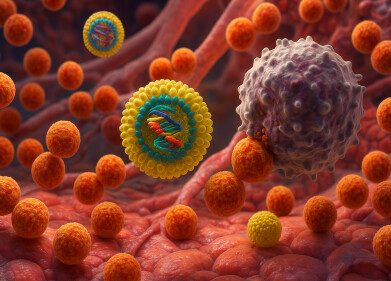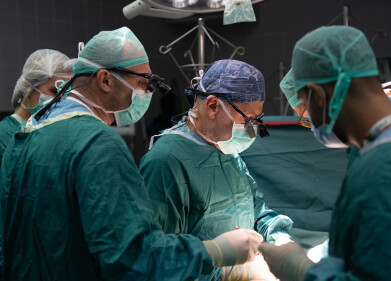-
 Number of cured young acute myeloid leukaemia patients rises
Number of cured young acute myeloid leukaemia patients rises
News
Number of cured young acute myeloid leukaemia patients rises
Jun 25 2013
Nearly half of teens and young adults with acute myeloid leukaemia are cured as a result of improvements in treatment and care, new research shows.
The study, which has been led by the London School of Hygiene and Tropical Medicine and co-funded by Cancer Research UK and the Laura Crane Youth Cancer Trust.
It is estimated that the cure rate for 15-24 year olds diagnosed in 2006 was 48 per cent, marking a sixfold increase from the rate recorded in 1975, which was only eight per cent.
In the research, cure is defined as the proportion of a group of cancer survivors for whom life expectancy is similar to that of the general population, due to their age and sex.
However, the treatment may still carry some long-term side effects.
Lead author, Dr Anjali Shah, research scientist at the London School of Hygiene & Tropical Medicine and the University of Oxford, said: “The good news is that nearly half of young adults with AML are cured of their disease, and that cure rate has increased for patients of all ages in England.
“Our study suggests that the main reason for these improvements is the development of new treatments, combined with good levels of recruitment to UK clinical trials.
"These key issues have been effective in curing more people of AML. But levels of cure of this disease in England remain lower than those observed in other European countries, such as Sweden. The reasons for these differences are unknown.”
Pam Thornes, trust manager at the Laura Crane Youth Cancer Trust, claimed that it was reassuring to see that cure rates in young people with specific cancers are much greater than they were 30 years ago.
“This is testament to the research, which charities such as the Laura Crane Youth Cancer Trust are helping to fund, to better understand cancer, which has led to the advancement in cancer care and treatment.
“Young people with cancer often get overlooked and usually get treated as a child or an adult, which in many cases isn’t tailored to their age-specific needs,” Ms Thornes noted.
In Britain, roughly 2,500 people are diagnosed with AML every year, with the risk of developing the condition increasing significantly with age.
Posted by Fiona Griffiths
Digital Edition
Lab Asia Dec 2025
December 2025
Chromatography Articles- Cutting-edge sample preparation tools help laboratories to stay ahead of the curveMass Spectrometry & Spectroscopy Articles- Unlocking the complexity of metabolomics: Pushi...
View all digital editions
Events
Jan 21 2026 Tokyo, Japan
Jan 28 2026 Tokyo, Japan
Jan 29 2026 New Delhi, India
Feb 07 2026 Boston, MA, USA
Asia Pharma Expo/Asia Lab Expo
Feb 12 2026 Dhaka, Bangladesh


















